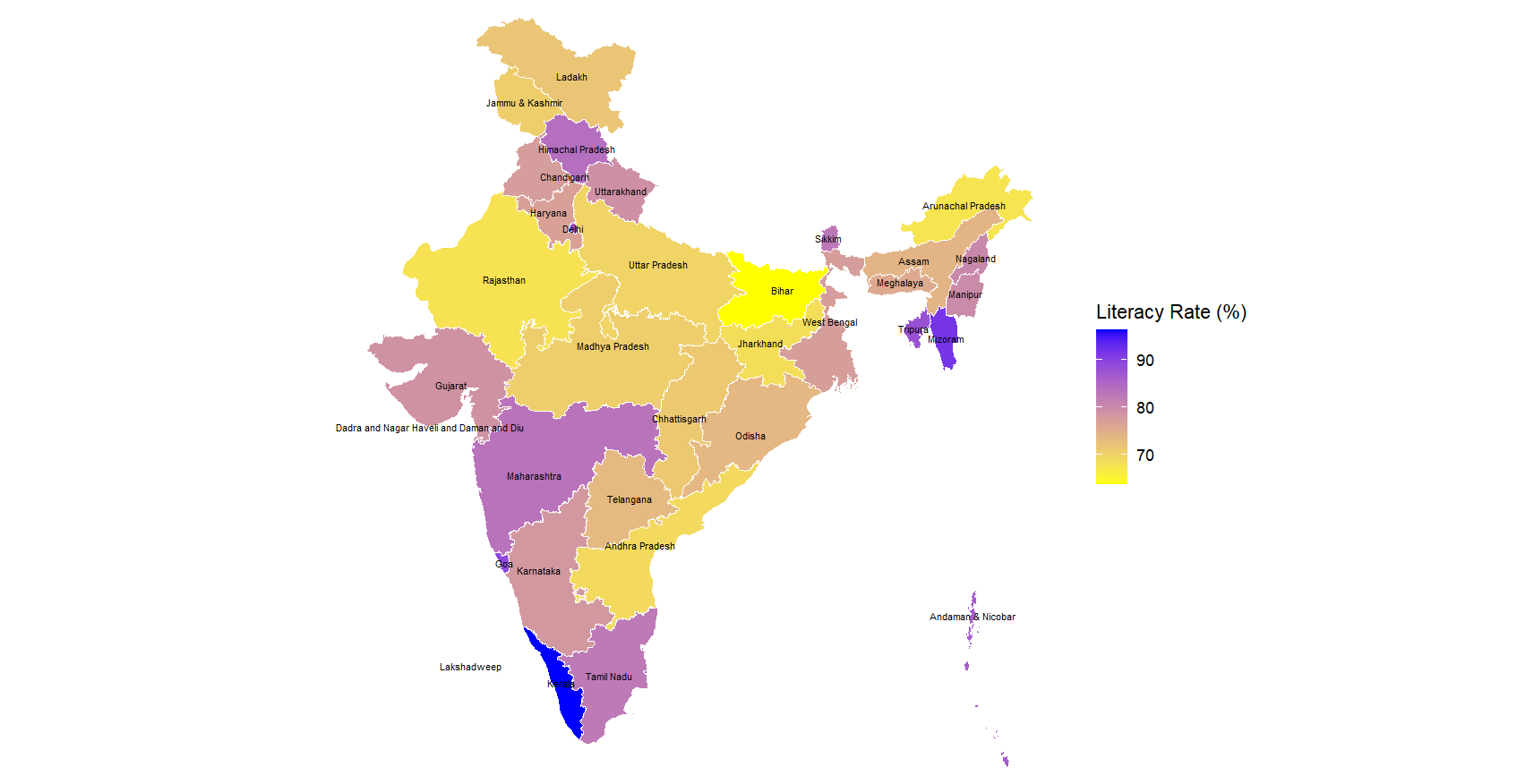
In R struggled to find a map of India that aligns with Indian government standards. GADM offer disputed territories inaccurately. Using these unofficial versions may lead to issues, especially in professional or governmental contexts.
Here’s a map created using a GeoJSON file that closely follows India’s official state and union territory boundaries. This example visualizes the literacy rate across the 36 divisions.

# required libraries
library(sf)
library(ggplot2)
library(readxl)
library(dplyr)
# GeoJSON file for India states
india <- st_read("india_states.geojson")
# Read Excel literacy data
literacy_data <- read_excel("India_Literacy_Rate_By_State.xlsx")
# Merge literacy data with spatial data
india_merged <- india %>%
left_join(literacy_data, by = c("ST_NM" = "ST_NM"))
# Transform CRS to a projected system UTM for India to avoid longitude/latitude distortions
india_merged <- india_merged %>%
st_transform(crs = 32643) # UTM Zone 43N
# Plot the map using ggplot2
ggplot(india_merged) +
geom_sf(aes(fill = `Literacy Rate (%)`), color = "white") + # Fill with literacy rate
geom_sf_text(aes(label = ST_NM), size = 2, check_overlap = TRUE) +
scale_fill_gradient(low = "yellow", high = "blue") + # gradient from yellow to blue
labs(
title = "Map of India with Literacy Rate by State",
fill = "Literacy Rate (%)"
) +
theme_minimal() +
theme(
legend.position = "right", # Position the legend to the right
axis.text = element_blank(), # Hide axis text
axis.title = element_blank(), # Hide axis titles
panel.grid.major = element_blank(), # Remove grid lines
panel.grid.minor = element_blank() # Remove minor grid lines
)
Ensure The ST_NM column must match exactly in both the GeoJSON and datasets.